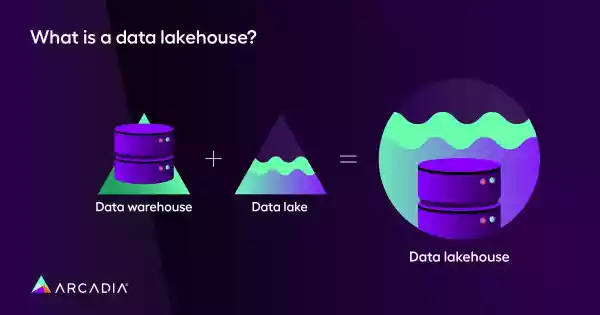How the data lakehouse will revolutionize healthcare
Adaptable and speedy, a data lakehouse balances rigid structure with flexibility to support innovation in healthcare.
Data’s revolutionizing the world as we know it, and healthcare is no exception. Technology speeds up processes, eliminates unnecessary manual labor, and allows users to access information instantaneously. In medicine, that opens up a world of possibilities, from an aggregated Master Patient Index (MPI) to an AI-powered pre-visit report — but only if the right structures are in place.
As healthcare changes rapidly, it’s essential that organizations have the right infrastructure to support future developments. Here, we’ll discuss the concept of a data lakehouse, and why it’s an organization’s best asset to prepare for an innovative, efficient future.

What is a data lakehouse, and why does it matter in healthcare?
A data lakehouse is the combination of two technical methodologies for database architecture — a data lake, a large repository of data in various states of structure, and a data warehouse, where data is structured and stored for analysis. It combines the best of both worlds, so users get the flexibility of vast amounts of data with the usable, well-organized capabilities of a warehouse.
It’s important in healthcare specifically because it provides the baseline technology to support current workflows as well as functions that will emerge in the future — all of them depend on great, speedy, reliable data. Whether it’s a developing patient-facing AI or a large language model that will make charts more succinct, a data lakehouse lets healthcare organizations embrace the tools that presently exist (and those that will soon).
What does the right data architecture look like?
A data lakehouse prioritizes speed, interoperability, and scale. Put simply: it’s fast, the information can flow freely between users and applications, and that data can scale up for new use cases as they arise. When you’re browsing technology vendors, look for:
- Flexibility: Adaptation to evolving data types and sources.
- Availability: Versatile accessibility through various sources, enhancing integration capabilities.
- Velocity: Minimized latency and optimized data orchestration.
- Scale: A price-to-performance ratio that outstrips traditional models.
How does a data lakehouse solve healthcare data woes?
The best-of-both-worlds combination of data lakes and warehouses offers healthcare organizations incredible benefits. From size (supporting numerous users) to speed (real-time data), it’s technically agile and imminently usable.
- Near-limitless concurrency: Scaling to meet the demands of thousands of users without compromising performance.
- Diverse data access: Versatile ways to approach and utilize data, from web apps to direct table access, fostering seamless integrations.
- Rapid data turnaround and recovery: Hours, not days, for data delivery and a robust system for fast data retrieval during unexpected disruptions.
- Empowered operations: Real-time access to crucial data health indicators, along with easy export configurations.
- Adaptable data sourcing: From raw files to intricate model details, embracing the depth and breadth of healthcare data.
- Instantaneous reporting: Unlocking real-time analytics workflows.
- Granular data distribution: Allowing intricate data access across vast enterprise networks, fostering "mini-lakehouses" for distinct teams.
- Enhanced support operations: Streamlined architecture aids in faster resolution of complex technical challenges.
- Facilitating Innovation: Paving the way for novel partnerships and swift feature implementation.
How does the data lakehouse help healthcare organizations perform optimally?
Data lakehouse architecture is more than a technological update – it's a strategic enabler. By equipping themselves with the best and fastest data technology on the market, healthcare organizations can hit milestones at top speed, confident in the information they’re using to make important decisions with finite resources.
In value-based care, a data lakehouse can supercharge patient stratification and give real-time insights into population health. By combining a wealth of data from multiple sources, administrators and providers get a holistic look at their patients’ health histories.
From a data analytics and IT perspective, the data lakehouse tackles bad data through native deletions and offset management. It’s also incredibly secure, giving administrators the ability to create “mini-lakehouses” specific to certain users (and restricting access within the platform).
A lakehouse with a view of healthcare horizons
The future of healthcare data management is here, and embracing it now can propel organizations forward in unprecedented ways. A data lakehouse lets users capture important victories in the present, but critically, it paves the way towards a future where technology could lead to happier, healthier lives through generative AI and accelerators included in the platform. From a data lakehouse, the horizon looks particularly sunny.
To learn more about how Arcadia unifies data sources to deliver results across the care continuum through the power of lakehouse architecture, explore the platform or schedule a demo.
